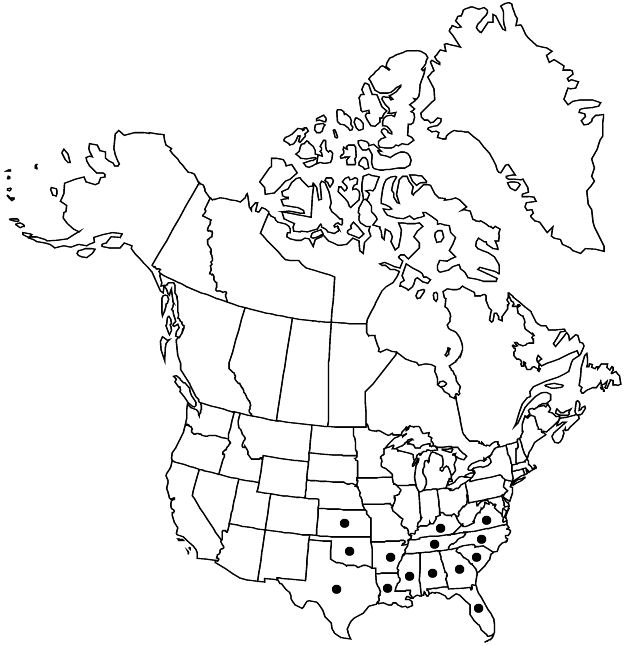Drosera brevifolia
Fl. Amer. Sept. 1: 211. 1813.
Plants not forming winter hibernaculae, rosettes to 2 (–3.5) cm diam.; stem base not bulbous-cormose. Leaves prostrate; stipules absent or reduced to 1 or 2 minute hairs; petiole often not differentiated from blade, dilated distally, 0.5–1 cm, glabrous; blade cuneate, 0.4–1 cm × 5–12 mm, usually longer than petiole. Inflorescences 1–8-flowered; scapes (1–) 4–9 cm, stipitate-glandular. Pedicels stipitate-glandular. Flowers 15 mm diam.; sepals distinct, oblong-ovate, 2.5–3.5 × 1.5–2.5 mm, stipitate-glandular; petals white to rose-pink, obovate, 4–8 × 2–3 mm. Capsules 3 mm. Seeds black, obovoid or oblong, 0.3–0.5 mm, base caudate, crateriform, pits in 10–12 rows. 2n = 20.
Phenology: Flowering Apr–May(–Dec).
Habitat: Moist sandy-peaty pinelands and roadsides
Elevation: 0–300 m
Distribution

Ala., Ark., Fla., Ga., Kans., Ky., La., Miss., N.C., Okla., S.C., Tenn., Tex., Va., Mexico, West Indies (Cuba), Central America, South America (Brazil)
Discussion
Drosera brevifolia is the smallest and perhaps the most widespread species of the genus in the Southeast. It may be rare or local throughout its range, and may act as an annual, especially if the habitat dries out. The flowers are large for the size of the plant, and the stipitate-glandular scapes, pedicels, and sepals are quite distinctive. The species is easy to grow in cultivation.
Selected References
None.